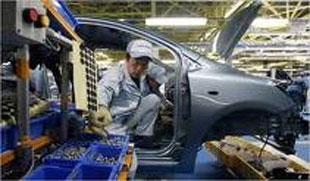| |
|
| |
|
 |
Supply
Chain by the Numbers |
| |
|
| |
- March 31, 2016 -
|
| |
|
| |
|
| |
|
| |
New Transport Mode - Blimps? More Warnings about the Impact of Robots on Jobs; Wage Increases in Japan Remain Near Zero Despite Desparate Hopes for Inflation; Parcel Drone Finally Takes Flight in US |
| |
|
| |
| |
| |
|
.5
|
|
That's about how many miles a drone flew in what is being called the first federally-sanctioned drone delivery in a US urban area without the help of a human to manually steer it. The delivery was executed on March 10 the Reno, NV area by drone startup Flirtey, which just announced the success this week. Flirtey programmed the drone's flight path using GPS and then loaded a parcel of emergency supplies - including food, water, and a first-aid kit - into a box tethered to one of the company's drones. The drone then flew to an uninhabited house, where it eventually lowered the package to the home's front porch using a rope while hovering above. "We think the safest way to deliver packages is for the drone to remain at a distance and lower it into the customer's hand," Flirtey's CEO said. Current FAA rules require the drone to be within eyesight of the operator at all times, among other major restrictions.
|
| |
| |
|
| |
| |
$13 |
 |
That's about how much wages for Toyota workers in Japan will rise this year, after conclusion of the annual Spring time negotiating season in the country known as Shunto. Many in government and beyond were hoping for a much higher increase, as Japan desperately tries to stoke inflation back up after two decades of almost nonexistent price increases and sometimes deflation. "What is needed is a jump-start to a wage-price spiral of the sort feared from the 1970s", one economist noted. Japanese prime minister Shinzo Abe has said he was hoping for overall wage increases of as much as 10%, but alas it appears on average wages will rise only a meager 0.3% this year, down from an only slightly better 0.69% seen on average in 2015. That despite a very low unemployment rate in the country of just 3.2%. Japan badly needs inflation in part to get the economy going, in part to help it reduce the impact of its huge government debt load. |
| |
| |
|
|
|
| |
 |
 |
| |
|
|
| |